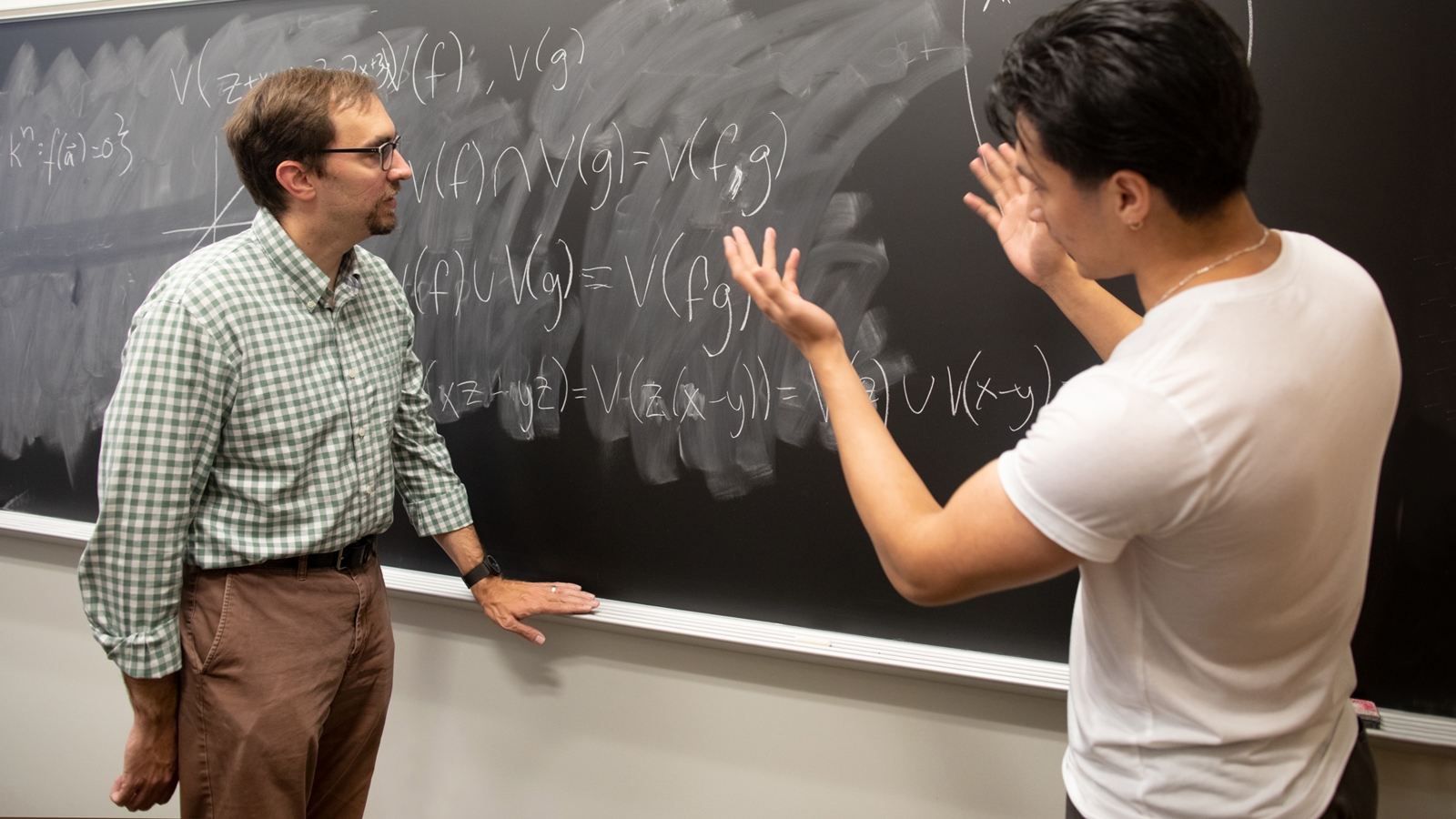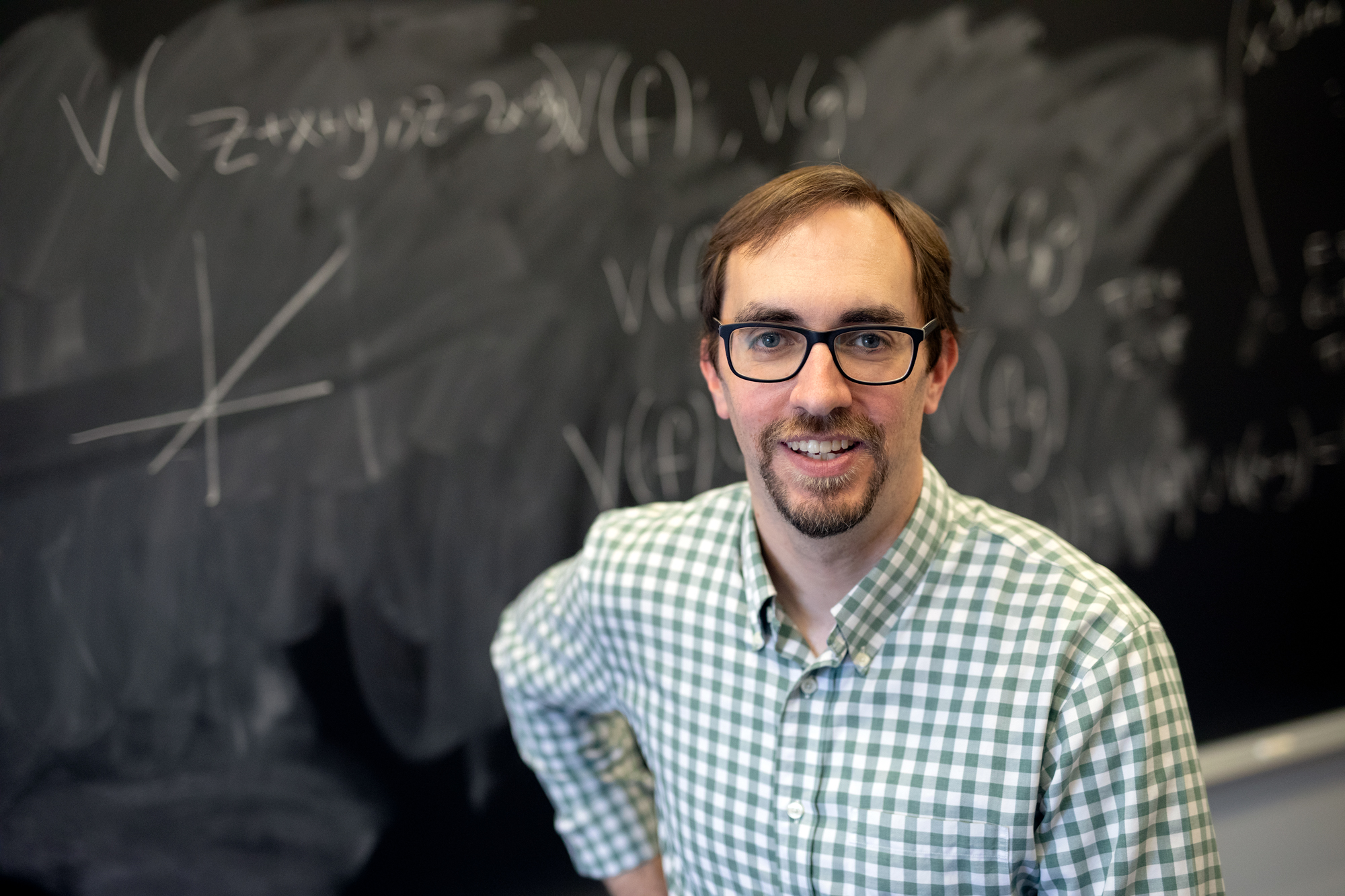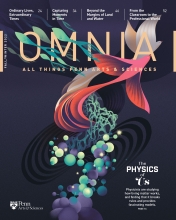The idea of the “flipped classroom”—in which lectures and presentations are delivered outside of class time and in-person learning features active student engagement—is becoming a familiar concept to many in education, but Professor of Mathematics Philip Gressman says that’s only one example of a more comprehensive teaching approach called SAIL.
The idea is that anything you’re doing that’s getting your students engaged, that’s having their thinking happen in that classroom—that’s SAIL.
“Structured, Active, In-class Learning, or SAIL, is an acronym that’s unique to Penn,” explains Gressman. “It describes a whole host of ideas for how to run a classroom. The idea is that anything you’re doing that’s getting your students engaged, that’s having their thinking happen in that classroom—that’s SAIL,” he says.
In the humanities, students have long been accustomed to coming to class ready to discuss pre-assigned readings, but that’s not always the case in math and science classes. Gressman says, “STEM students are often treated by instructors like empty vessels—that the information should be poured into them, and what we’re trying to do is push back against that. So, I might say, ‘Please read this section, try these exercises, and then come to class and let’s do the next steps together.’”
Gressman uses the SAIL approach primarily in his Calculus I course, and he puts a heavy emphasis on group work. Students tackle exercises together, slowly building on the basics of a new concept. The aim is to capture that “aha” moment in real time, to be present with students when something clicks.
It’s not easy to do, and Gressman says getting it right requires trial and error. “You’re balancing on a knife edge,” he says. “If you go too far, if you make it too hard, then you have to deal with frustration and you create unnecessary problems. It takes a while to get a sense of exactly where the line is, because being right on the edge of failure—but succeeding—that’s the optimal spot for learning.”
Gressman was drawn to SAIL out of a desire to “bring his teaching where it’s needed most.”
“Penn is a place where there are plenty of students who are very strong, and they can do well in any class without much help, but in a traditional calculus class, some students really struggled,” he says.
After switching to SAIL, Gressman says his grade distributions in Calculus I became much more compact, and the grades of students at the lower end jumped up. Overall averages were higher, too, suggesting that everyone benefits. Gressman says SAIL also helped him create a more inclusive environment that addresses persistent stereotypes about who is good at math and who is not.
Gressman also has adopted a few of the technological tools he used for remote learning during the height of the COVID-19 pandemic, such as having students collaboratively edit documents on Google Docs outside of class time. He also moved his office hours online, which he says is much more accessible for students and easier for him.
Some students are initially uncomfortable with the SAIL approach, Gressman notes, not only because it’s unfamiliar, but also because they may sense that they are not “getting” the material.
One theory, he says, is that a good lecture that’s pleasant to listen to creates a cognitive fluency effect—it’s entertaining, but it may not stick. Another possibility is that students are not used to confronting the feeling of struggle in the company of their peers and instructors. “It can be an uncomfortable thing, but that’s exactly what we want,” Gressman says. “We want that struggle to happen in the classroom, so that it is done and overcome when the exam comes. You have to explain that that’s not a mistake—it’s a feature.”
Gressman explains the SAIL approach to his students at the outset of the course, including the research behind it. He says this transparency has pedagogical benefits. “When students have an opportunity to examine the way you’re thinking about the course, and see for themselves what the evidence is, they’re more willing to go along.”
This transparency carries over to the students. For instance, to counter concerns they are experiencing more difficulty than their peers, Gressman asks students to openly share how much time they spend on problems. “I actually have the whole class go up and make a histogram,” he says, “so that everybody can see what everyone else’s experience is like.”
Most, he says, ultimately embrace the SAIL approach. “I have students come up to me at the end of the semester and say, ‘I need to take the next course in the sequence. Which one is being offered in this format?’”





